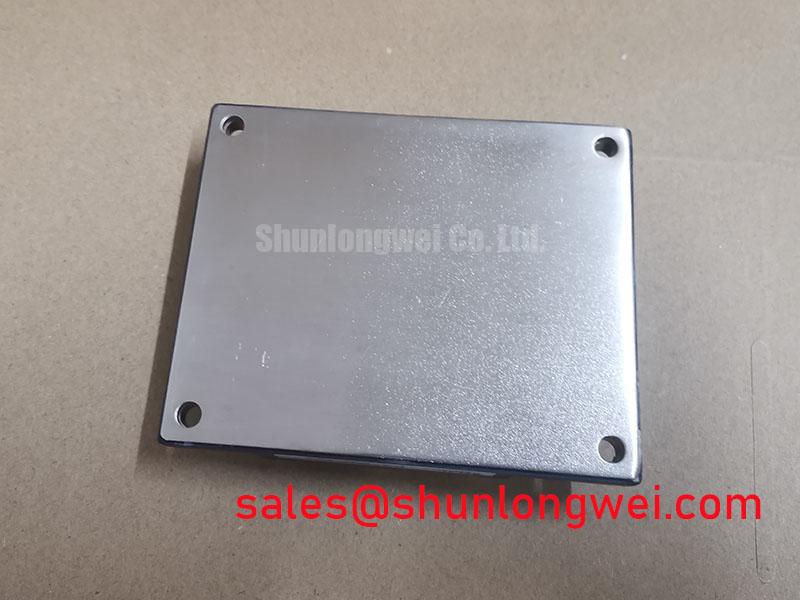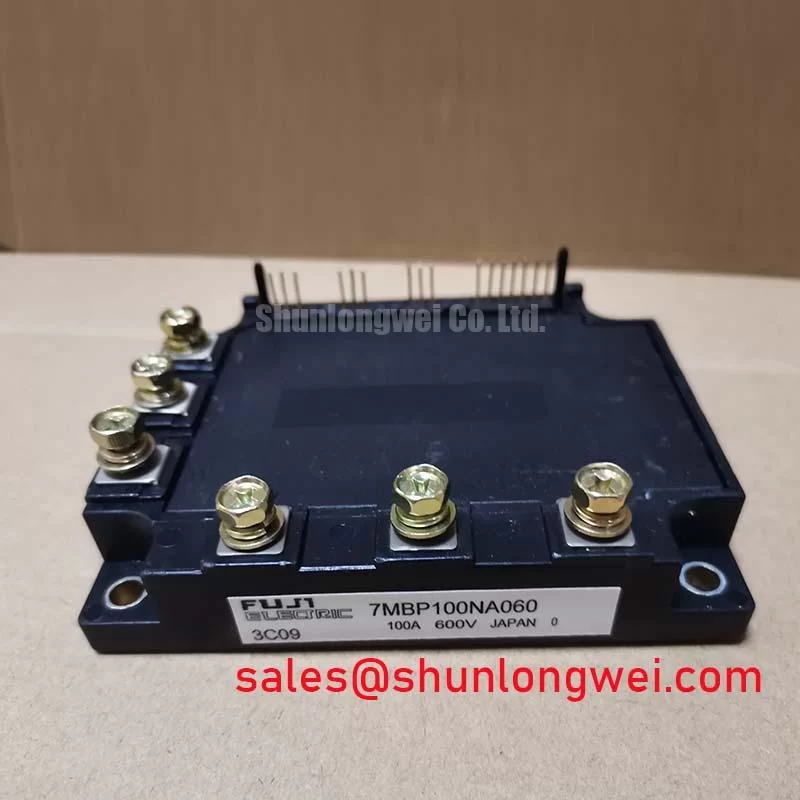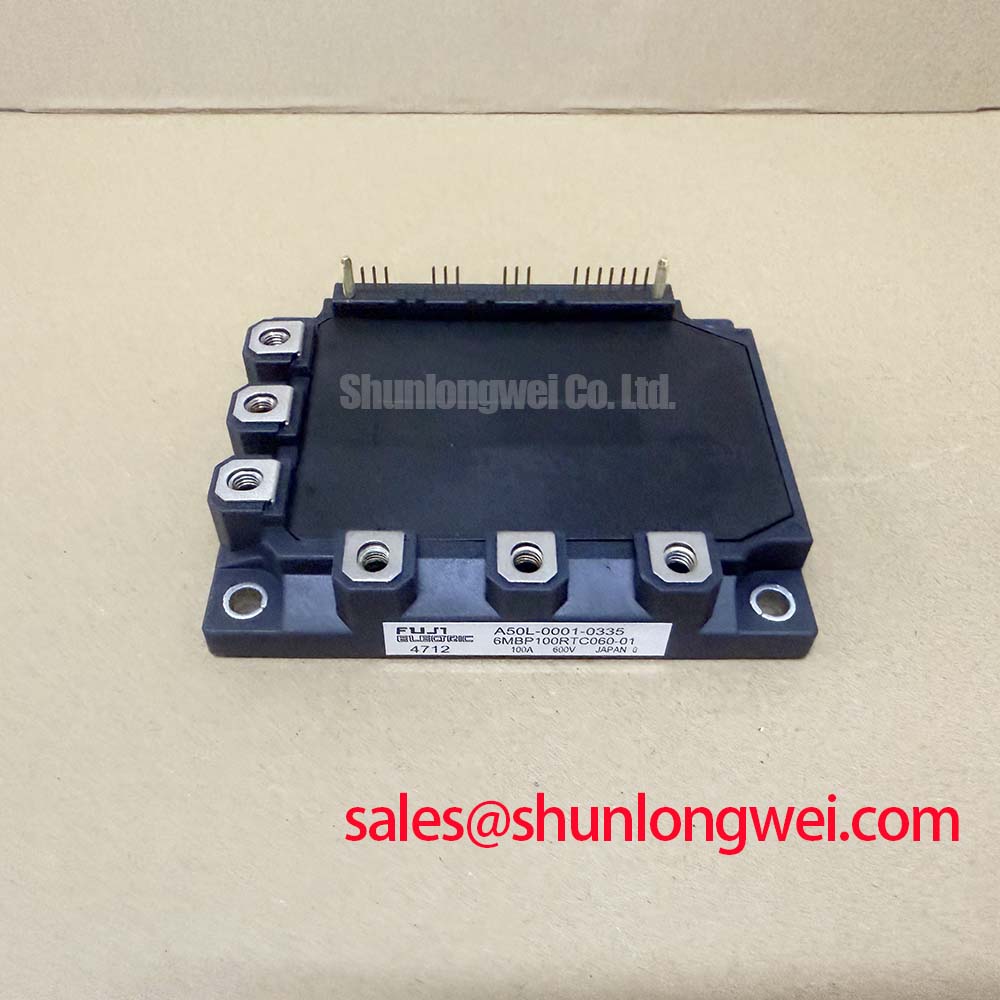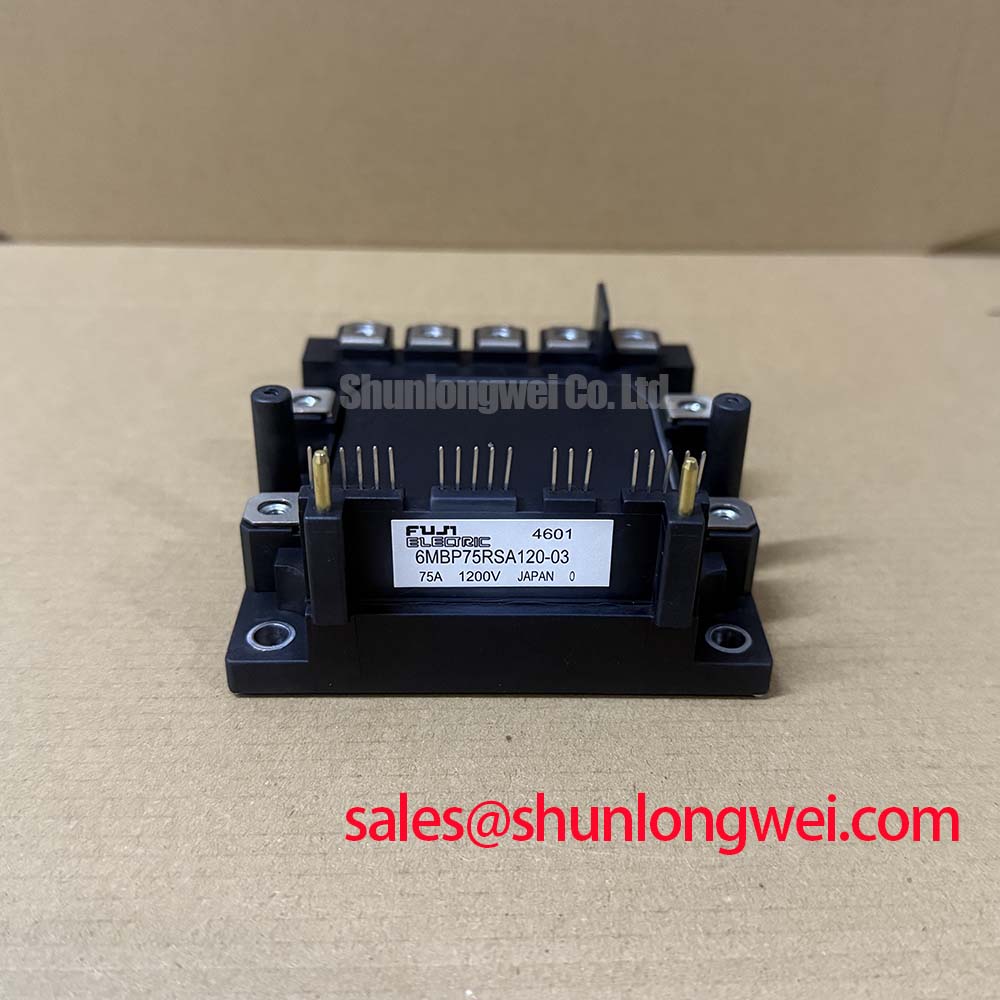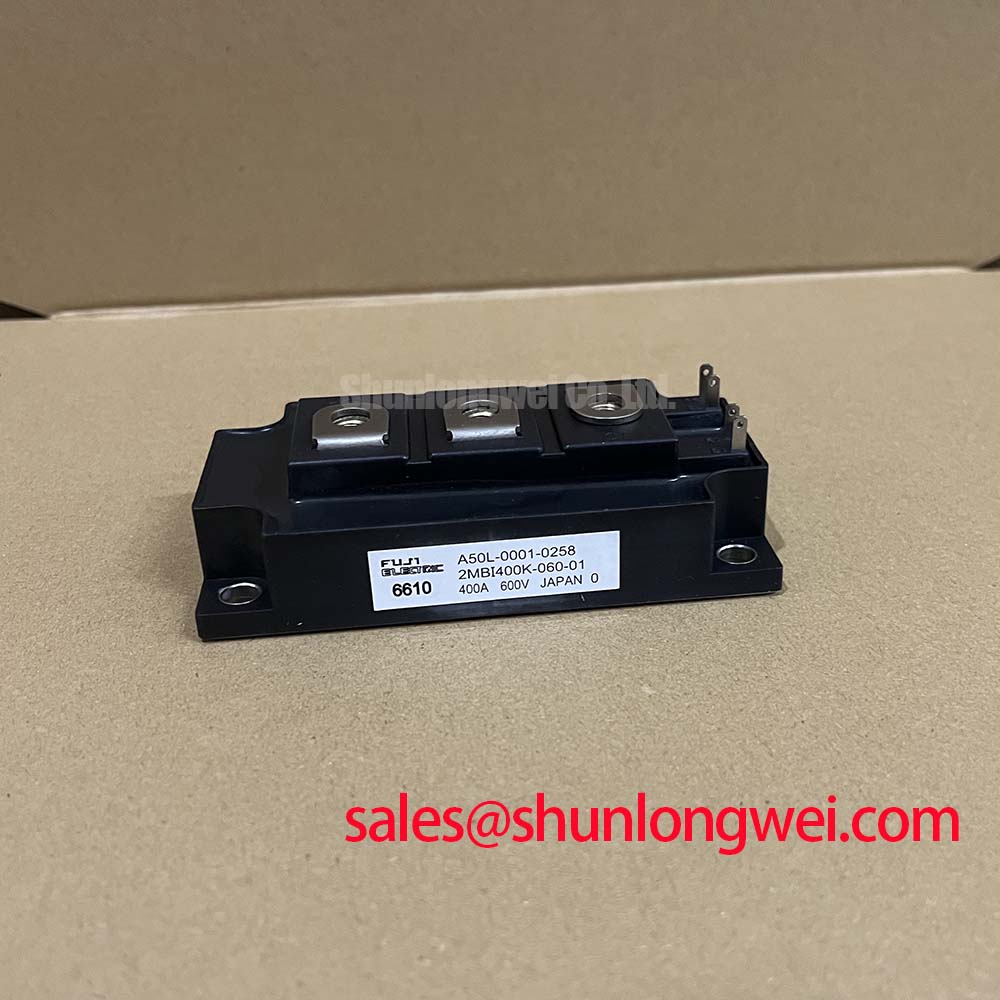Content last revised on November 15, 2025
7MBR50VA060-50: Fuji 600V 50A V-Series 7-in-1 IGBT Module
Streamline your motor drive design with the Fuji Electric 7MBR50VA060-50, a highly integrated 7-in-1 IGBT module that simplifies system architecture and enhances thermal management. This module delivers a robust 600V | 50A performance with a typical VCE(sat) of 1.70V. Its key benefits include accelerated assembly time and improved system reliability. For engineers grappling with component count and PCB complexity, this device consolidates a three-phase inverter, brake chopper, and NTC thermistor into a single compact P600 package, offering a direct path to a more efficient and manufacturable design.
Application Arenas for the Integrated Power Stage
The consolidated architecture of the Fuji Electric 7MBR50VA060-50 provides substantial value in applications where space, assembly cost, and reliability are primary design drivers. By integrating seven key semiconductor functions, it eliminates the need for multiple discrete components, external wiring, and complex gate drive layouts. This intrinsic simplification directly translates to reduced manufacturing complexity and a smaller system footprint.
- Compact Servo Drives: In precision motion control systems, such as those found in robotics and CNC machinery, power density is essential. The module’s all-in-one nature allows for smaller, more powerful servo amplifiers without compromising on features like dynamic braking.
- General-Purpose Inverters: For small to medium-sized Variable Frequency Drives (VFDs) used in conveyor systems, pumps, and fans, the 7MBR50VA060-50 accelerates development and reduces the bill of materials (BOM).
- Automated Guided Vehicles (AGVs): The module's compact form factor is well-suited for the space-constrained traction inverters found in warehouse robotics and other mobile industrial platforms.
- Uninterruptible Power Supplies (UPS): The integrated inverter and brake circuit can be leveraged in smaller online UPS systems to manage both power conversion and battery charging paths efficiently.
Best Fit: For AC motor drives under 22kW requiring dynamic braking and precise temperature monitoring, the 7MBR50VA060-50's level of integration provides an optimal balance of performance and design simplicity.
Data-Informed Selection: Comparative Considerations
Evaluating an IGBT module requires a focus on application-specific parameters. The 7MBR50VA060-50 presents a specific feature set geared towards integrated motor control. The following points provide factual data to support your design analysis when comparing this module with other potential solutions.
- Integration Level: This is a 7-in-1 module (6 inverter IGBTs + 1 brake IGBT). Many alternative solutions are 6-in-1 (CIB) modules without an integrated brake circuit, requiring an external chopper. This module's configuration simplifies inventory and assembly for systems needing regenerative braking.
- Voltage and Current Class: Operating at 600V and 50A, this module is positioned for 200/240V AC line-voltage applications. For systems operating on higher 400/480V AC lines, a 1200V module such as the 7MBR75VB120-50 would be the appropriate component class to consider for the required voltage headroom.
- Thermal Feedback: The inclusion of an NTC thermistor provides a built-in temperature sensing mechanism. Designs using modules without this feature must allocate space and budget for an external sensor on the heatsink, potentially adding a point of failure and reducing the accuracy of junction temperature estimation. For a deeper understanding of thermal performance, see our guide on Why Rth Matters: Unlocking IGBT Thermal Performance.
The Strategic Advantage of Integrated Power Modules
The shift towards higher levels of integration in power electronics is a direct response to market demands for smaller, more efficient, and cost-effective systems. The Fuji Electric 7MBR50VA060-50 embodies this trend by moving beyond a simple collection of switches to become a subsystem-on-a-substrate. The primary strategic benefit is a reduction in design entropy; by pre-integrating and optimizing the connections between the inverter and brake stages, the module manufacturer, Fuji Electric, absorbs a significant portion of the layout and parasitic inductance challenges. This allows engineering teams to focus their resources on higher-level control algorithms and product features rather than on the intricacies of power stage layout and component sourcing. This approach de-risks the project timeline and simplifies the supply chain, creating a more predictable path from prototype to production.
Core Specifications for System Implementation
The following table details key parameters of the 7MBR50VA060-50, highlighting their direct engineering significance for your design process. For a complete list of specifications, please download the official datasheet.
| Parameter | Value | Engineering Significance |
|---|---|---|
| Collector-Emitter Voltage (Vces) | 600V | Provides the necessary voltage margin for reliable operation in 200/240V AC-powered systems, protecting against line transients. |
| Collector Current (Ic) | 50A (at Tc=80°C) | Defines the continuous current handling capability, suitable for motors typically in the 11kW to 22kW range, depending on operating conditions. |
| Collector-Emitter Saturation Voltage (Vce(sat)) | 1.70V (typ) / 2.20V (max) | This value is a primary factor in conduction losses. What is the impact of Vce(sat)? It directly influences the module's heat generation and, consequently, the required size and cost of the heatsink. |
| Total Power Dissipation (Pc) | 208W (per 1 IGBT at Tc=25°C) | Sets the maximum thermal load the device can handle. This parameter is the foundation for all thermal simulation and heatsink selection. |
| Operating Junction Temperature (Tj) | -40 to +175°C | The wide operating range ensures robustness across diverse industrial environments. The high 175°C maximum provides a significant thermal buffer for reliability. |
| Thermistor Resistance | 50 kΩ (at 25°C) | Provides a standardized resistance value for interfacing with monitoring and protection circuits, simplifying the implementation of over-temperature shutdown. |
Download the 7MBR50VA060-50 Datasheet
A Closer Look at the V-Series Architecture
The Fuji Electric 7MBR50VA060-50 is built upon the company's established V-Series trench gate and field-stop IGBT technology. This platform is engineered to balance conduction and switching losses, which is a critical trade-off in motor drive applications that operate over a wide range of frequencies and load conditions. The internal layout of the P600 package is optimized to minimize stray inductance between the components, which is particularly beneficial for reducing voltage overshoots during high-speed switching events. The thermal path from the silicon die to the module's baseplate is also carefully managed. The module’s thermal resistance is like the diameter of a drainpipe for heat; a lower value means heat can be extracted more efficiently, keeping the junction temperature lower and enhancing the device’s operational lifespan. This integrated approach, detailed in resources like our analysis of IGBT structures, is key to the module's performance and reliability.
From Concept to Production: A Deployment Snapshot
Consider the design of a compact AGV traction drive. The engineering team's goals are to maximize power density, ensure reliable operation over an 8-hour shift, and simplify field service. Using discrete components would require a large PCB area for the three-phase inverter, a separate module or discrete IGBT for the braking resistor, and an external temperature sensor, all leading to complex assembly and multiple potential failure points. By selecting the 7MBR50VA060-50, the team integrates all power and sensing functions into one component. This shrinks the inverter's physical volume by over 40%, simplifies the main PCB layout, and provides a direct, reliable temperature feedback loop to the main controller for thermal rollback or emergency shutdown. The result is a faster time-to-market and a more robust, easily manufacturable end product.
Frequently Asked Questions (FAQ) about the 7MBR50VA060-50
1. What is the primary benefit of the integrated brake chopper in the 7MBR50VA060-50?
The integrated brake chopper simplifies the management of regenerative energy from the motor during deceleration. Instead of needing a separate power module and associated wiring to dissipate this energy through a resistor, this module provides a built-in switch, reducing component count, assembly cost, and potential EMI loops.
2. How should I interpret the thermistor specifications for my protection circuit?
The datasheet provides a resistance-temperature (R-T) curve for the integrated NTC thermistor. Your control system should use this curve to translate the measured resistance into an accurate module temperature. Typically, a voltage divider circuit is used to read the thermistor value with an ADC on your microcontroller to implement over-temperature protection.
3. Can the 7MBR50VA060-50 be used for applications other than motor control?
Yes, while optimized for motor drives, its 7-in-1 topology can be utilized in other power conversion systems. For example, it is suitable for small-scale solar inverters or welding power supplies where a three-phase bridge and a high-side chopper circuit are required.
4. What are the key considerations for mounting and heatsinking this module?
Proper thermal management is crucial. Ensure a flat and clean mounting surface on the heatsink. A thermal interface material (TIM) with low thermal resistance should be applied evenly to the module's baseplate. Mounting screws must be tightened to the torque specified in the datasheet to ensure optimal thermal contact without inducing mechanical stress.
5. Does the P600 package have any specific layout recommendations?
Yes, to minimize parasitic inductance, the bus bar or PCB traces connecting to the module's main power terminals (P, N) should be as short and wide as possible. The gate drive connections should be kept away from high-current paths to reduce noise coupling. Following the pinout and application notes closely will ensure stable and reliable performance.
Designer's Reflection
The engineering value of a component like the Fuji Electric 7MBR50VA060-50 extends beyond its electrical specifications. It represents a strategic design choice that prioritizes system-level efficiency. By collapsing multiple power stages into a single, thermally-aware package, it allows designers to reallocate their efforts from fundamental power layout to value-added innovation in control software and user interface. As power systems become more distributed and compact, this level of functional integration is no longer a convenience but a critical enabler for the next generation of industrial automation and motion control.









